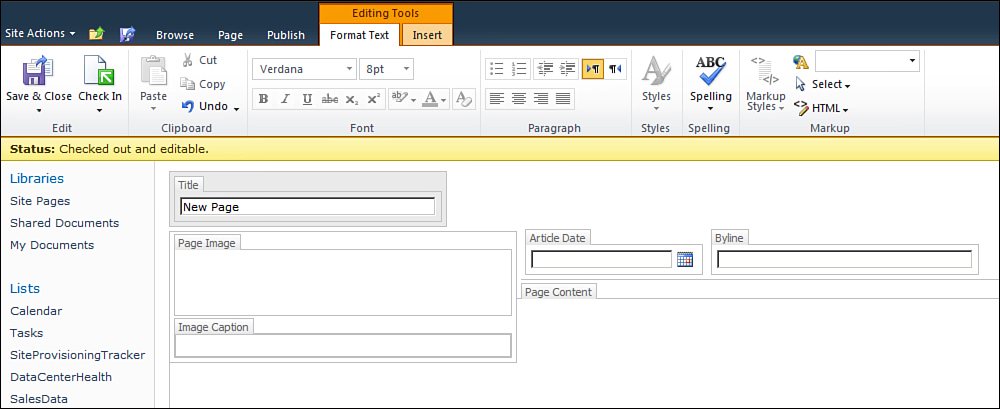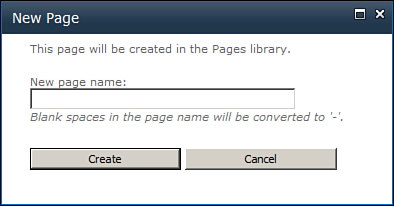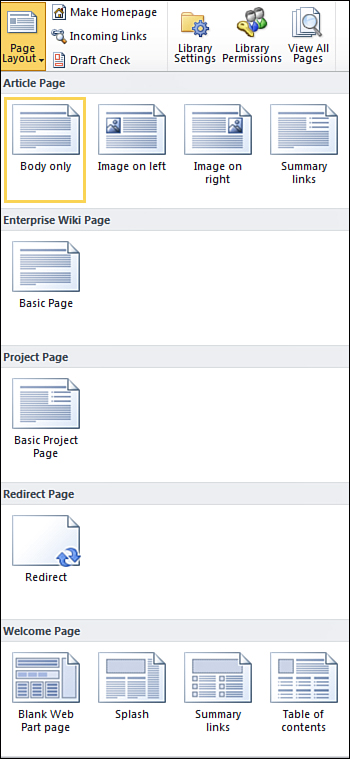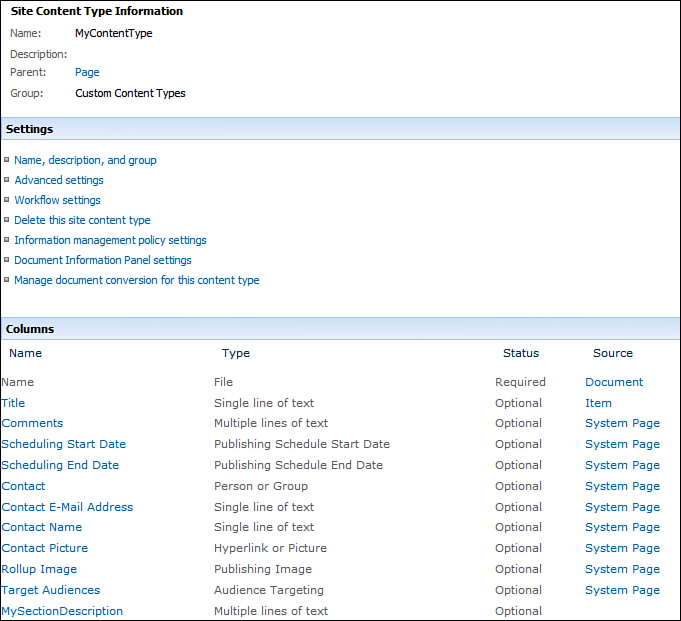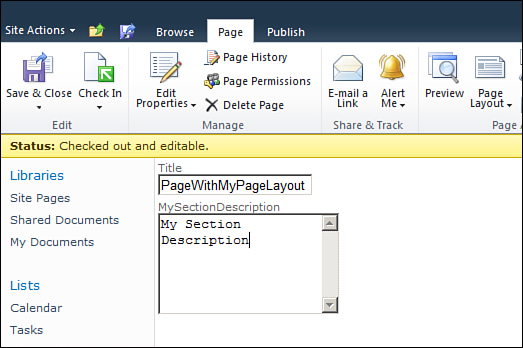Exploring the New Web Content Management Features
The primary aim of a web content management system is to provide authoring, branding, and publishing tools to enable users to create and manage web content, with little knowledge of web programming techniques. SharePoint 2010 revolutionizes web content management by providing a lot of new, exciting features for different content management requirements. For example, in controlled publishing scenarios, such as Internet facing sites, administrators can exercise greater control over publishing to ensure a consistent look and feel and uniform branding of the site. On the other hand is the need for a loosely controlled process for community-based sites or wiki sites. Apart from publishing features, SharePoint 2010 provides a rich set of new authoring tools and features as well. For example, you can now change the page layout dynamically while creating content. This section briefly explores some of these new enhancements in SharePoint 2010 one by one.
Improved Authoring Tools
With the new set of authoring tools, content creators can now focus only on what rather than how. The new improved user experience and ribbon interface and a rich set of authoring tools enables authors to create content without needing specialized technical skill.
The Ribbon Interface
The ribbon interface was introduced in Office 2007 and has been adapted in SharePoint 2010 for a consistent experience across Office applications. The ribbon makes it easy to discover features and is intuitive to use. In SharePoint 2010 the contents of the ribbon change according to context, that is, the ribbon is context-aware. For example, text formatting options become available when editing a text field, and picture tools are available when editing an image, as demonstrated in Figures 13.16 and 13.17.
Figure 13.16. Text formatting options available when editing a text field
Figure 13.17. Picture tools available when working on an image
New Page Creation and Page Layout Related Features
SharePoint 2010 allows one-click page creation, where you specify only the page title and the page gets created as shown in Figure 13.18.
Figure 13.18. SharePoint 2010 allows single-click page creation
You can change the page layout later dynamically by picking a page layout from the ribbon as shown in Figure 13.19.
Figure 13.19. Dynamically changing page layouts
Other Web Content Management Improvements
Following are some more web content management improvements in SharePoint 2010:
• Improved rich text editor with a rich set of formatting controls and options to embed images and videos directly into rich text.
• Easy to add rich media with options such as preview and play a video before selecting it.
• Specialized Asset Library for rich media, which includes images, audio and video files, and the addition of a new customizable Silverlight media player to deliver the rich media the content.
• New improved content query web part that allows filtering based on metadata of the items being queried or on a value passed as a query string.
• Content administrators can restrict authors to use only fixed styles or approved web parts for maintaining a consistent look and feel of the sites.
• New Web Analytics features for monitoring various aspects of site usage.
• Improved community building tool features allowing users to tag, rate, and comment on site content.
Creating a Custom Page Layout
You can build your own custom page layouts if the out of the box ones don’t fit the bill for you. This section shows you how.
Page layouts in SharePoint are tied to content types. You can either choose to use an existing content type or create a new one. In the following Try It Yourself section, you learn to create a new one extending the Page content type (present in Publishing Content Types).

